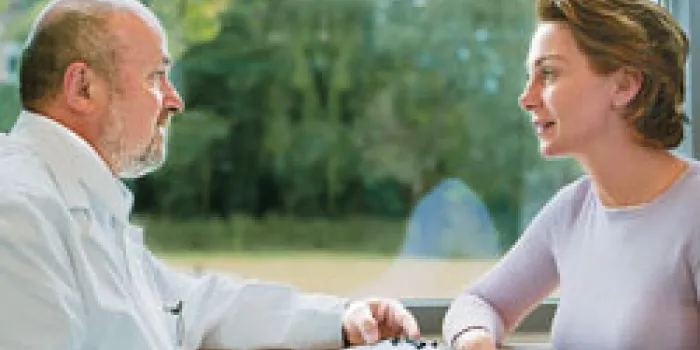The first time doctors told Sherri Revard that she couldn’t have a bleeding disorder because she was a girl, she was 5 years old and had just had her tonsils out.
But it wasn’t the last time.
Now 41, the hospice admissions nurse from Brownstown, Michigan, bled excessively as a teen, when severe pain and heavy periods made her miss two days of school a month. And it lasted into her 20s, when the birth of her three children—two of them twins born by cesarean section—led to unexplained bleeding that lasted for days.
Eventually, Revard’s gynecologist urged her to visit a specialist. At age 29, doctors discovered that her symptoms fit with many types of bleeding disorders, including hemophilia A and symptomatic carrier—but they diagnosed her with probable type 2 von Willebrand disease and a platelet dysfunction.
[Steps for Living: Family Planning]
Across the US, women like Revard tell their doctors of heavy and painful periods, childbirth complications and other reproductive tract problems. And just as people in the bleeding disorders community are becoming more aware of women’s unique experience with bleeding disorders, a movement is under way to educate their doctors.
“Only five to seven years ago, gynecologists lacked awareness about women and bleeding disorders,” says Rezan Kadir, MD, OB/GYN and member of the obstetrics and gynecology department at the Royal Free Hospital in London.
When Kadir surveyed 500 gynecologists on their knowledge of bleeding disorders, only 5% to 6% said they would arrange appropriate testing to determine if their patient had a bleeding disorder. More than half suspected nothing when a woman presented with very heavy periods and said they would not take steps to rule out a bleeding disorder.
In reality, about 15% to 20% of women with heavy and painful periods have bleeding disorders.
An April 2009 monograph on the subject published in the journal Treatment of Hemophilia brings the point home. “Reproductive Health in Women with Bleeding Disorders” filters all the latest research on women with bleeding disorders and lays out appropriate diagnosis and treatment methods.
It reveals:
- Adolescent girls and perimenopausal women are likely to have the most reproductive tract symptoms from their bleeding disorders because they’re least likely to ovulate and therefore experience erratic and longer periods.
- Women with bleeding disorders may have no symptom other than very heavy periods, including so-called “flooding” and passing of large blood clots.
- Painful periods are more common in women with bleeding disorders than in other women. In addition, some over-the-counter pain medications, chiefly nonsteroidal anti-inflammatories, can worsen bleeding.
- Between 2% and 25% of women with bleeding disorders experience more bleeding with ovulation and hemorrhaging ovarian cysts than women without bleeding disorders.
Today, experts and organizations worldwide are drawing attention to women with bleeding disorders, including the National Hemophilia Foundation’s Project Red Flag. Andra H. James, MD, director of the Women’s Hemostasis and Thrombosis Clinic and associate professor of obstetrics and gynecology at Duke University Medical Center, co-authored the monograph with Kadir. The two have also published several studies on women with bleeding disorders in major North American and European gynecological medical journals.
“Gynecologists should have a low threshold of suspicion,” James asserts. “They should ask appropriate questions, help sort it out and consult a hematologist who has experience in hemostasis or a hemophilia and thrombophilia center for knowledge.”
“I hold my gynecologist up on a pedestal because it was a learning experience for both of us,” Revard says. “It’s something he didn’t have to take on, to learn. And I think it opened his eyes to other bleeding disorders people have.”

